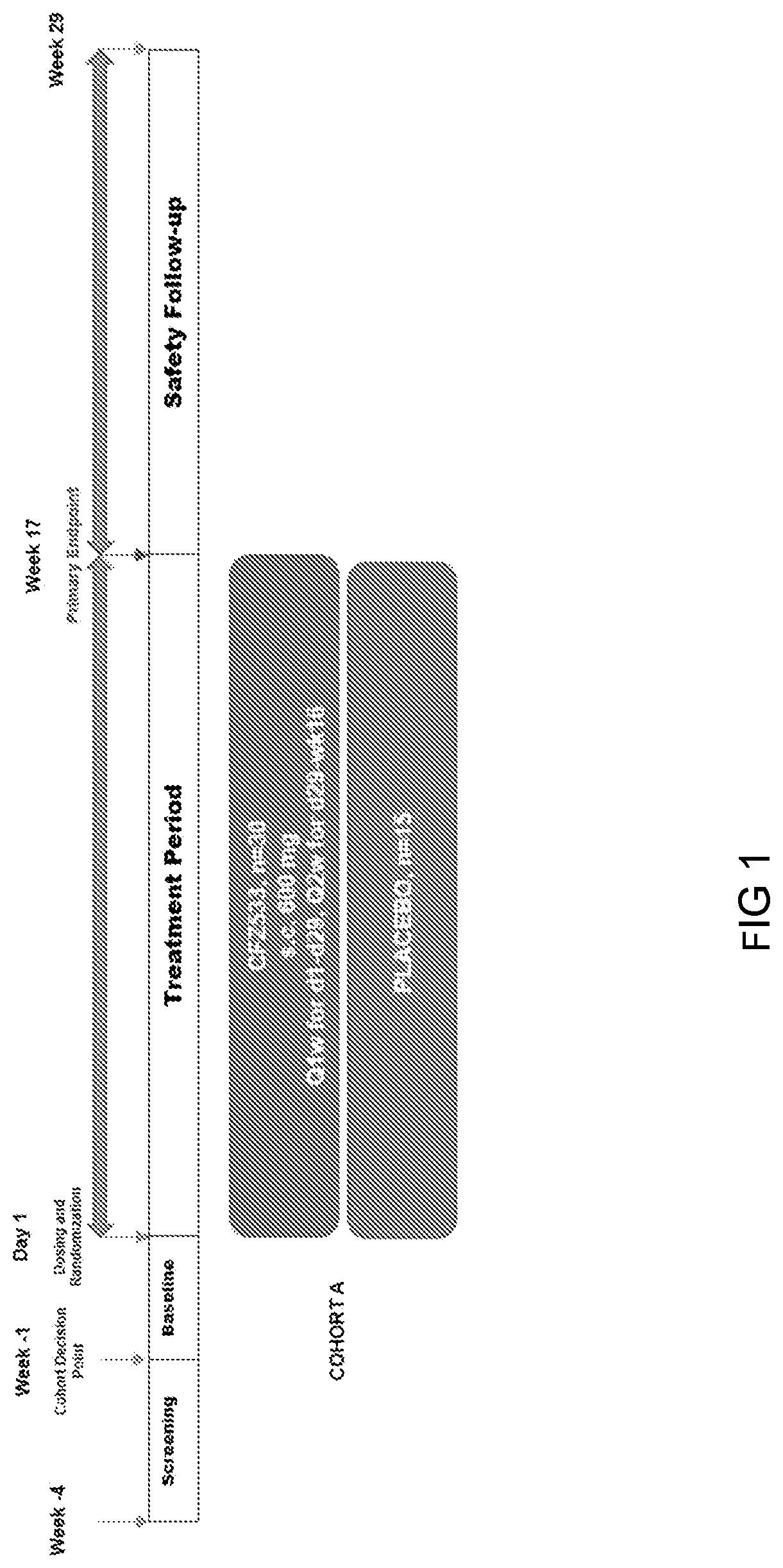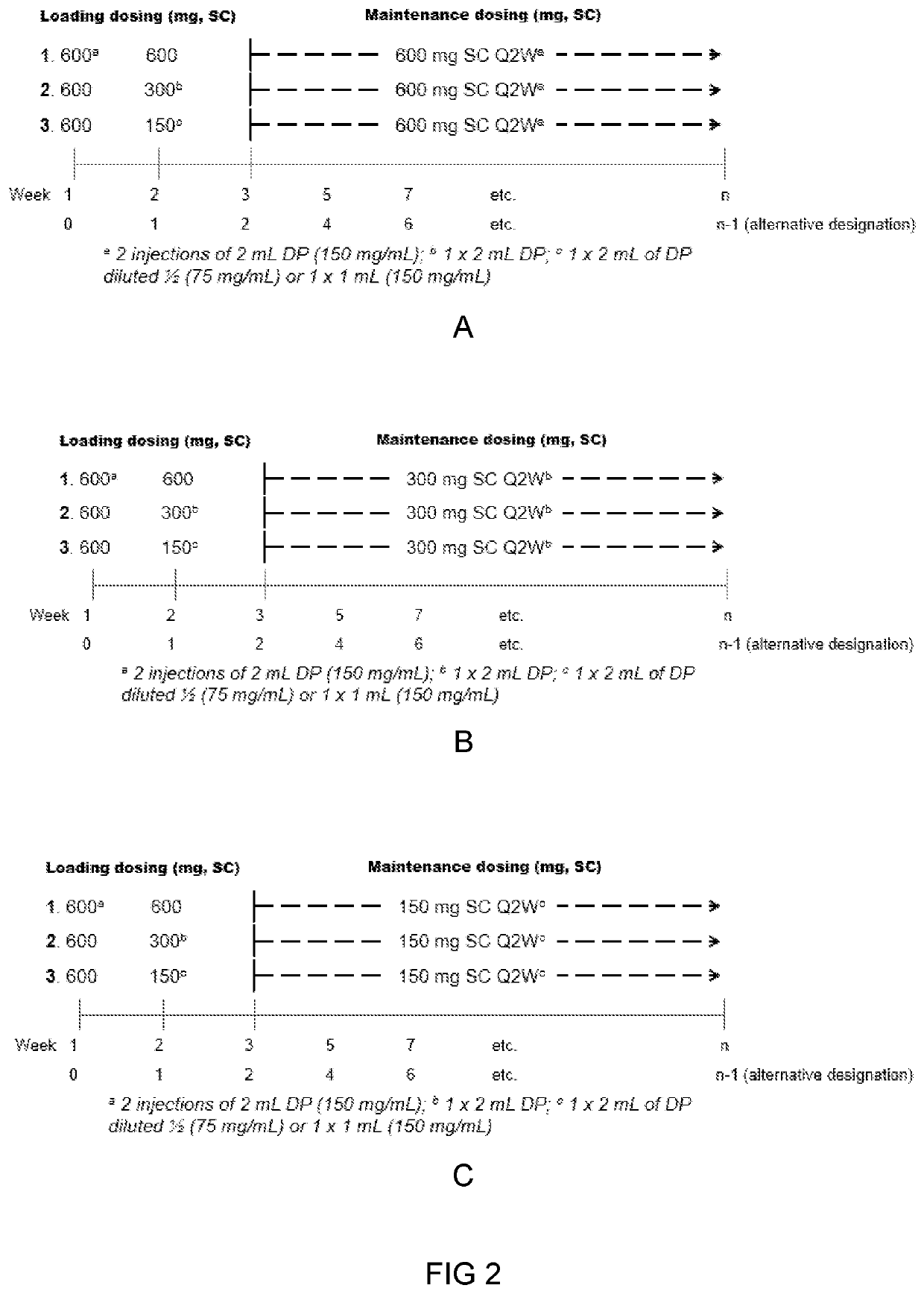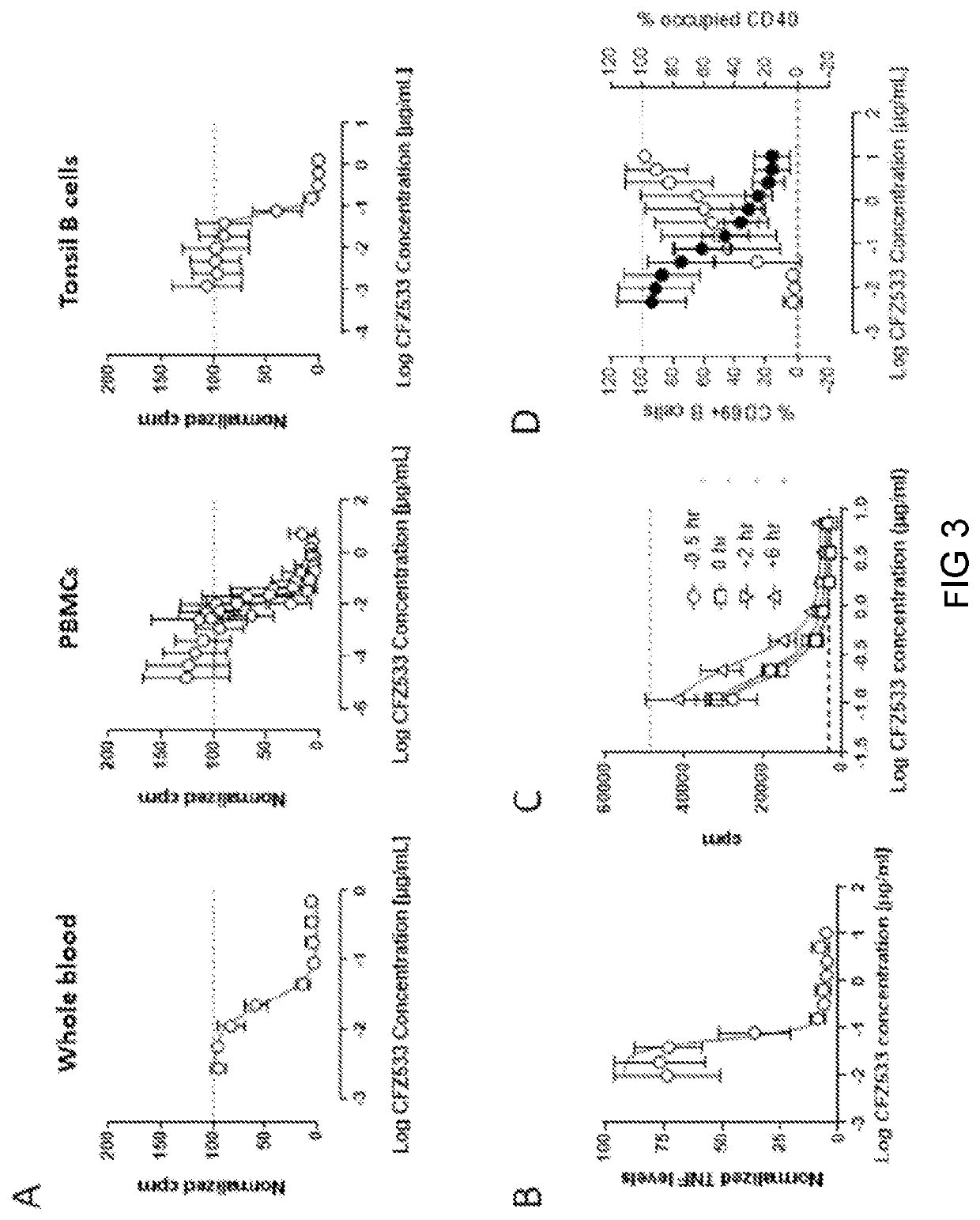Anti-cd40 antibodies for use in treatment of hidradenitis
a technology of anti-cd40 antibodies and hidradenitis, which is applied in the field of anti-cd40 antibodies, can solve the problems of hypertrophic scarring, social isolation, and often devastating psychosocial effects of patients with hs, and achieves the effects of reducing the number of patients, reducing the number of anti-cd40 antibodies, and improving the effect of anti-cd40 antibodies
- Summary
- Abstract
- Description
- Claims
- Application Information
AI Technical Summary
Benefits of technology
Problems solved by technology
Method used
Image
Examples
example 1
gonists
[0168]Anti-CD40 mAbs with silenced ADCC activity have been disclosed in U.S. Pat. Nos. 8,828,396 and 9,221,913, incorporated by reference here in their entirety. Anti-CD40 mAbs with silenced ADCC activity are predicted to have an improved safety profile relative to other anti-CD40 antibodies, and in particular may be more suitable for non-oncologic indications, hidradenitis suppurativa (HS).
[0169]According to a non-binding hypothesis of the inventors, the two mAbs from U.S. Pat. Nos. 8,828,396 and 9,221,913, designated mAb1 and mAb2, are thought to be suitable compounds for treatment of HS. The antibody mAb1, also called CFZ533, is particularly preferred.
[0170]mAb1 inhibits CD154-induced activation in vitro and T cell-dependent antibody formation and germinal center formation in vivo.
[0171]To enable a person skilled in the art to practice the invention, the amino acid and nucleotide sequences of mAb1 and mAb2 are provided in Table 1 below.
[0172]Another anti-CD40 mAb known in ...
example 2
ogy
1. Primary Pharmacology
[0241]mAb1 binds to human CD40 with high affinity (Kd of 0.3 nM). However, it does not bind to Fcγ receptors (including CD16) or mediate antibody-dependent cellular cytotoxicity or complement-dependent cytotoxicity. mAb1 inhibits recombinant CD154 (rCD154)-induced activation of human leukocytes, but does not induce PBMC proliferation or cytokine production by monocyte-derived dendritic cells (DCs). mAb1 binds human and non-human primate CD40 with very similar affinities.
[0242]In vivo, mAb1 blocks primary and secondary T cell-dependent antibody responses (TDAR), and can prolong survival of kidney allografts in non-human primates (Cordoba et al 2015). In addition, mAb1 can disrupt established germinal centers (GCs) in vivo.
[0243]The CD40 receptor occupancy and functional activity were simultaneously assessed in vitro using human whole blood cultures. Functional activity was quantified via CD154-induced expression of CD69 (the activation marker) on CD20 positi...
example 3
cal Toxicology and Safety Pharmacology
[0245]Toxicology studies with mAb1 did not reveal any significant organ toxicities, including no evidence of thromboembolic events as reported in clinical trials with anti-CD154 mAbs (Kawai et al 2000). In a 13-week GLP rhesus monkey study (weekly dosing at 10, 50 and 150 mg / kg), increased lymphoid cellularity was noted in 5 / 22 animals which was considered to be due to ongoing infection, an observation consistent with the pharmacology of mAb1. Inflammatory lesions in the kidneys and lungs of 2 animals at 50 mg / kg were noted, and in one of the two animals, lesions in the eyes and trachea were also noted. While a direct effect of mAb1 on the kidney and lung cannot be excluded, the weight of evidence including confirmation of opportunistic pathogens, suggests these findings are likely secondary to mAb1-mediated immunosuppression and of an infectious origin. In view of these inflammatory findings, the No Observed Adverse Effect Level (NOAEL) for the...
PUM
| Property | Measurement | Unit |
|---|---|---|
| concentrations | aaaaa | aaaaa |
| concentrations | aaaaa | aaaaa |
| concentration | aaaaa | aaaaa |
Abstract
Description
Claims
Application Information
 Login to View More
Login to View More - R&D
- Intellectual Property
- Life Sciences
- Materials
- Tech Scout
- Unparalleled Data Quality
- Higher Quality Content
- 60% Fewer Hallucinations
Browse by: Latest US Patents, China's latest patents, Technical Efficacy Thesaurus, Application Domain, Technology Topic, Popular Technical Reports.
© 2025 PatSnap. All rights reserved.Legal|Privacy policy|Modern Slavery Act Transparency Statement|Sitemap|About US| Contact US: help@patsnap.com



